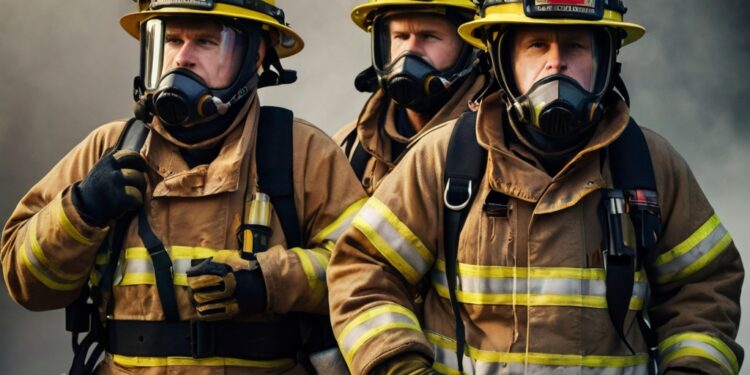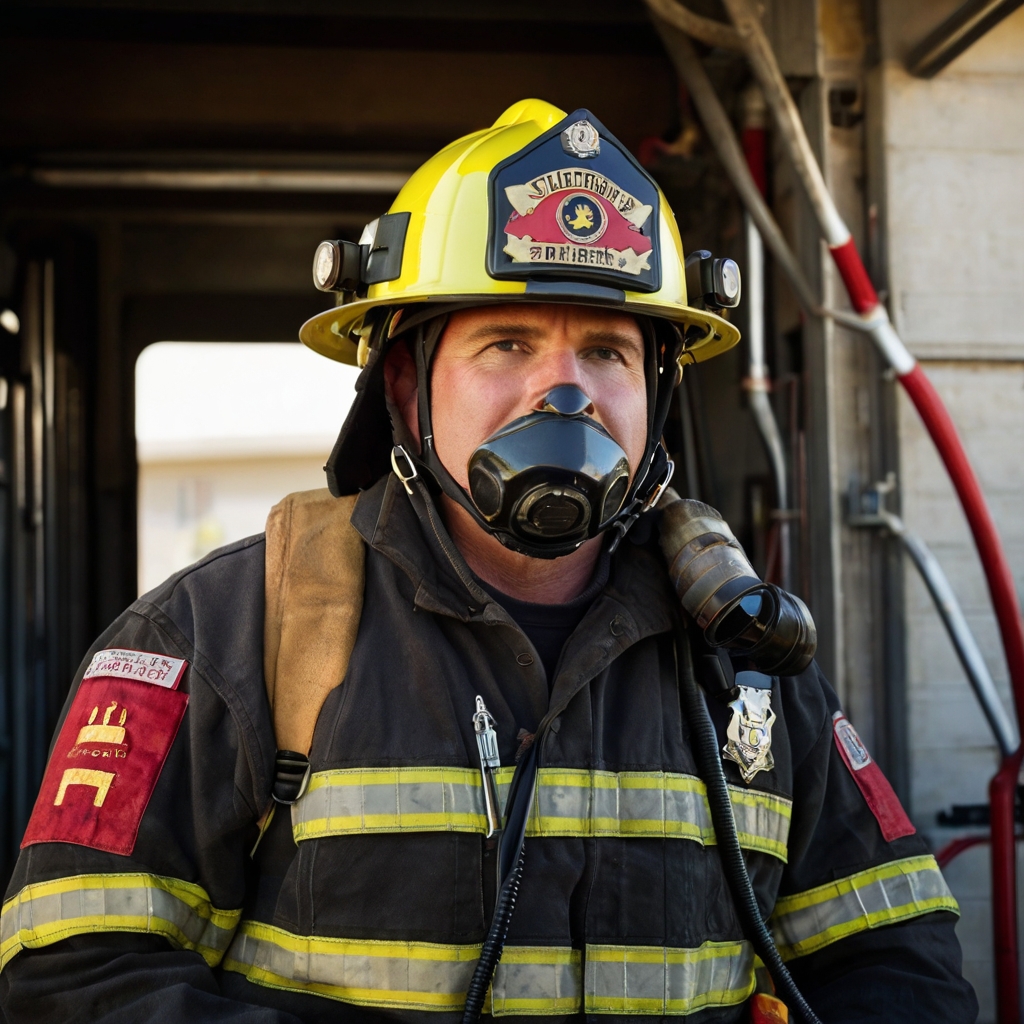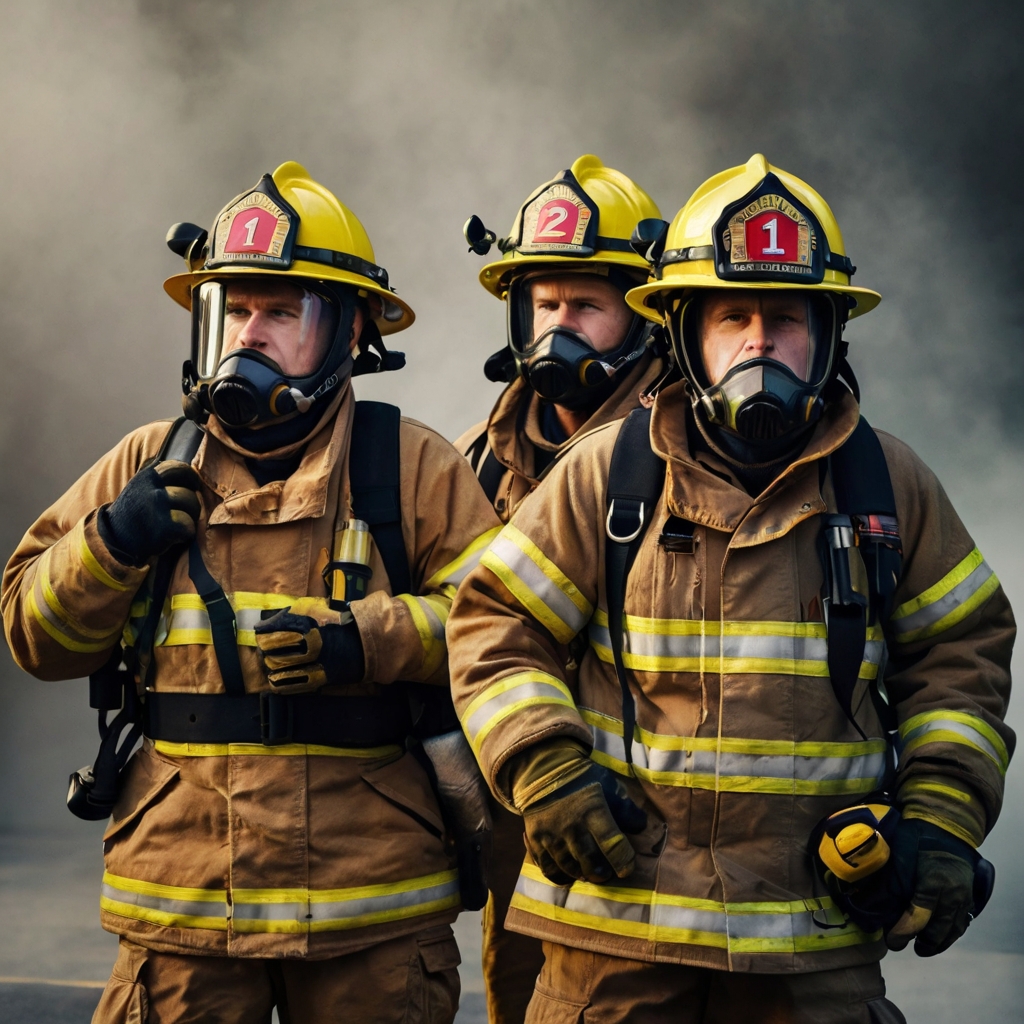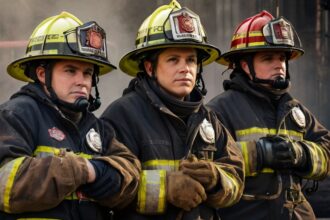Firefighter Ranks

The fire service’s paramilitary organizational structure dates back to 1647, and firefighter ranks have changed by a lot since then. The current hierarchy creates clear career paths. Entry-level positions start at $54,744, while top leadership roles can earn more than $321,073.
New firefighters begin as probationary members and complete six months of tough training. Dedicated professionals can climb through the ranks from Driver Engineer to Lieutenant, Captain, and Battalion Chief. The ultimate goal for many is to reach the Fire Chief position. Each rank comes with its own set of duties, qualifications, and leadership challenges that help fire departments run smoothly nationwide.
This piece will get into the details of each firefighter rank. You’ll learn about the requirements, duties, and opportunities at every level of the fire service hierarchy.

Table of Contents
- 1 Understanding Basic Fire Department Structure
- 2 Entry-Level Firefighter Positions
- 3 Mid-Level Fire Department Ranks
- 4 Senior Fire Officer Positions
- 5 Path to Becoming Fire Chief
- 6 Here are some FAQs about the firefighter ranks:
- 6.1 What is the highest paying firefighter position?
- 6.2 What is the most elite firefighter?
- 6.3 What are the different ranks of firefighter helmets?
- 6.4 What is the highest rank in fire force?
- 6.5 What state pays firefighters the most?
- 6.6 How old are most firefighters?
- 6.7 Are smokejumpers hotshots?
- 6.8 What is the biggest killer of firefighters?
Understanding Basic Fire Department Structure
Fire departments today run on a sophisticated organizational structure that delivers quick emergency response and smart resource management. Teams work together under a unified command system to create strong operational foundations.
Fire companies and battalions
Fire departments organize their forces into distinct companies that specialize in specific emergency responses. A fire company has one apparatus and its crew of 3 to 5 personnel. These companies serve as simple operational units of the department, and each type plays unique roles:
- Engine Companies: Provide water supply and primary fire suppression
- Truck/Ladder Companies: Handle aerial operations and building access
- Rescue Companies: Specialize in technical rescue operations
- Squad Companies: Perform hybrid functions combining rescue and firefighting capabilities
Battalion command oversees multiple fire stations and their companies. Each battalion typically manages four to five stations. This setup coordinates responses in larger areas and keeps resource management efficient.
Chain of command basics
Fire service follows a straightforward reporting structure where members report to one direct supervisor. Battalion chiefs manage station operations and create work schedules. Company officers (lieutenants or captains) lead individual units. This well-laid-out system creates accountability and speeds up emergency decisions.
Paramilitary organization model
The fire service adopted its paramilitary structure in 1647. This system builds on experience, seniority, and respect. The model works exceptionally well because it offers:
- Improved emergency preparedness with quick deployment abilities
- Direct authority lines for fast decisions
- Standard procedures across all units
- Well-defined training and discipline protocols
This organizational approach gives firefighters orders from one authority figure. It prevents confusion in critical situations. The system values teamwork and coordination – two crucial elements that make emergency responses successful.
Entry-Level Firefighter Positions
People who want to become firefighters must pass a tough selection process to join the fire service. Their experience starts when they meet strict eligibility requirements and show steadfast dedication to public safety.
Probationary firefighter requirements
The first step to becoming a firefighter involves meeting simple qualifications. Candidates should be at least 18 years old, though some departments require them to be 21. A high school diploma or equivalent and a valid driver’s license in good standing are necessary.
Physical fitness is the life-blood of this profession. Candidates need to pass the Candidate Physical Ability Test (CPAT). This test assesses these vital capabilities:
- Stair climbing with equipment
- Hose dragging and equipment carrying
- Ladder raising and forcible entry
- Search and rescue simulations
- Ceiling breach and pull exercises
Prospective firefighters must also pass detailed medical examinations, drug screening, and background checks. They need a clean criminal record without felony convictions.
Simple firefighter duties
New firefighters go through a vital training period that lasts 6-18 months. Senior firefighters mentor them as they become skilled at their fundamental responsibilities.
Their core duties include emergency response activities that protect life and property through firefighting techniques. New firefighters learn to use equipment of all sizes, from simple hand tools to specialized hydraulic apparatus. Clear communication through portable and mobile radios is essential.
Equipment maintenance is another key part of their role. New firefighters inspect apparatus to ensure proper operation. They monitor pressure levels, check fluids, and keep all tools in working condition. Regular training drills help them stay ready and improve their skills.
These professionals do more than respond to emergencies. They help with fire prevention, code maintenance inspections, and public education programs. Each incident requires detailed reports, and they must keep accurate records of their activities.
Mid-Level Fire Department Ranks
Moving up in the fire department takes real dedication, specialized training, and proven leadership skills. Firefighters can advance to higher positions that come with more responsibilities and technical skills as they gain experience.
Driver Engineer responsibilities
Driver engineers are the department’s technical specialists who operate and maintain fire apparatus. These professionals complete extensive training in vehicle operations and must get specialized certifications. Their role goes beyond just driving. They must know every hydrant location, water system, and emergency response route in their area.
The role comes with better pay, and some departments offer up to $85,860 per year. Driver engineers must show expertise in pump operations, equipment maintenance, and emergency vehicle operation. They often step up as acting leaders when lieutenants are away.
Lieutenant’s role
Fire lieutenants lead from the front as first-line supervisors who run daily operations and emergency responses. They guide firefighting teams during incidents and make sure everyone follows proper protocols and safety measures. A lieutenant’s key duties include:
- Running company training and drills
- Overseeing station personnel and equipment maintenance
- Making tough calls during emergencies
- Creating new policies and procedures
- Keeping accurate incident reports
Lieutenants need years of firefighting experience and must show strong leadership abilities. They mentor younger firefighters and work closely with other emergency services during critical situations.
Captain’s leadership duties
Fire captains are the highest-ranking officers at individual stations and oversee all personnel and operations. They lead multiple fire companies and direct resources during major emergencies. A captain’s responsibilities include both operational and administrative tasks, from managing budgets to developing policies and planning strategies.
Fire captains earn competitive salaries that can reach $130,437 in some departments. They must excel at managing people, running emergency operations, and handling public relations. Captains bridge the gap between frontline firefighters and senior department leaders. They run efficient stations while keeping service standards high.

Senior Fire Officer Positions
Senior fire officer positions represent the strategic leadership tier within fire departments. Experienced professionals in these roles guide operations and shape departmental policies. These positions need extensive experience and advanced qualifications to manage both emergency operations and administrative responsibilities.
Battalion Chief’s administrative role
Battalion Chiefs are the highest-ranking officers on duty who oversee multiple fire stations and their personnel. We created comprehensive work schedules and managed staffing levels at assigned stations. Their administrative duties include performance evaluations, communication processes, and short and long-term planning initiatives.
The role needs strategic resource management skills. Battalion Chiefs coordinate daily staffing to meet departmental objectives. Some departments offer competitive salaries. Seattle’s King County Fire Department positions start at $134,376.
Battalion Chiefs act as the Fire Chief’s representatives in policy and procedure matters for their assigned platoon. They watch over fire stations, equipment, and apparatus while coordinating emergency services resources.
Assistant Chief duties
Assistant Chiefs stand second-in-command in the department’s hierarchy and work directly under the Fire Chief’s supervision. These officers handle multiple critical responsibilities:
- Direct day-to-day operations of department divisions
- Develop and implement complex programs
- Review and analyze departmental operations
- Supervise division managers and their staff
- Participate in collective bargaining processes
Assistant Chiefs take full command of the department at the time the Fire Chief is absent. They help prepare capital and operating budgets and make recommendations about personnel allocation and department resources.
The role offers substantial financial compensation that reflects its high-level responsibilities. To cite an instance, San Francisco’s top Assistant Chief positions commanded salaries reaching $321,073. These officers must show exceptional leadership capabilities. They maintain strong relationships with stakeholders and serve as liaisons with officials in fire, law enforcement, and neighboring jurisdictions.
Assistant Chiefs focus on operational quality and support the Fire Chief in administrative functions. They review operations in divisions of all sizes to accomplish main goals and objectives. Their expertise helps develop and implement programs that maintain service quality while using available resources effectively.
Path to Becoming Fire Chief
Getting to the top of fire department ranks takes thorough preparation, deep commitment, and strong leadership skills. The path to Fire Chief includes meeting strict educational requirements and building significant experience in fire service operations.
Required qualifications
Future Fire Chiefs need a bachelor’s degree in Fire Science, Business Administration, Public Administration, or related field. They should reach at least the Battalion Chief rank with five years of progressive responsibility. Their background should cover administrative, supervisory, and budgetary management in fire prevention and suppression work.
Professional certifications make a big difference in career growth. The Center for Public Safety Excellence (CPSE) runs the Chief Fire Officer Designation program. Candidates must earn 150 points through education and experience combined. They can get 25 to 150 education points mainly through academic certificates. Experience points range from 5 to 60 based on service time.
Key responsibilities
Fire Chiefs handle both administrative and operational duties that determine their department’s success. Their main duties include:
- Developing and implementing strategic firefighting plans
- Coordinating emergency response operations
- Managing personnel recruitment and development
- Overseeing budget administration and resource allocation
- Building community relationships and trust
Fire Chiefs must know governmental funding principles and budget monitoring inside out. They guide the hiring, training, and promotions of department personnel. They also represent the department publicly and build strong relationships with elected officials, community organizations, and other agencies.
Leadership challenges
Fire service leadership comes with unique obstacles Chiefs must handle well. The biggest hurdles include the ongoing “us against them” mindset between management and labor. Chiefs also struggle with making quick decisions in critical situations and keeping discipline consistent across battalions.
Building trust remains a key challenge. Chiefs need to create an environment of personal integrity while reducing the fear of retaliation that often stops new ideas from coming forward. Limited mentoring programs in the fire service make leadership development even harder.
Successful Fire Chiefs use different leadership styles to tackle these challenges. They excel at democratic and collaborative approaches for administrative work but switch to autocratic decision-making during emergencies. Chiefs show thoughtfulness, optimism, and confidence while knowing how to guide their teams through tough times.
The role needs excellent communication skills to give clear directions during crises. Chiefs must also know how to involve their teams in creating administrative policies to gain support at all levels. This team-based approach helps implement department changes and maintain high operational standards.
Fire service ranks create a well-laid-out career path that builds on dedication, learning, and leadership growth. Each role, from probationary firefighter to Fire Chief, just needs specific qualifications. These positions come with unique responsibilities that protect our communities.
The fire service needs more than physical strength and technical knowledge to succeed. Firefighters must show steadfast dedication as they become skilled at new tasks at every rank. The trip from rookie to Fire Chief brings tough challenges, but the rewards go beyond good pay. They get chances to save lives and serve their communities.
This centuries-old paramilitary structure proves its worth through quick emergency response and clear paths to advance. Firefighters who grasp these ranks can plan their careers better and prepare to lead. People ready to serve will find a rewarding career that lets them grow professionally and make a real difference in public safety.
Here are some FAQs about the firefighter ranks:
What is the highest paying firefighter position?
The highest paying firefighter position is typically the fire chief, who oversees the entire fire department and manages operations, budgets, and personnel. Salaries vary by location, but fire chiefs in major cities can earn six-figure incomes. Higher firefighter ranks, such as deputy chief or battalion chief, also receive significant salaries based on experience and responsibilities.
What is the most elite firefighter?
The most elite firefighter units include smokejumpers, hotshots, and urban search and rescue (USAR) teams. Smokejumpers specialize in parachuting into remote wildfires, while hotshots are elite wildland firefighter ranks trained for the toughest wildfire conditions. These roles require advanced physical fitness, specialized training, and a deep understanding of fire behavior.
What are the different ranks of firefighter helmets?
Firefighter helmet color ranks vary by department but often follow a general pattern. Firefighters typically wear black or yellow helmets, lieutenants wear red, captains wear white, and chiefs wear gold or white helmets. Wildland firefighter ranks may use green or orange helmets for crew bosses and supervisors.
What is the highest rank in fire force?
The highest rank in most fire departments is the fire chief, responsible for overseeing the entire firefighting operation. Below the chief, firefighter ranks in order usually include deputy chief, battalion chief, captain, lieutenant, and firefighter. In wildland firefighting, the highest ranks include incident commander and division supervisor.
What state pays firefighters the most?
The state that pays firefighters the most varies yearly, but California consistently ranks at the top. Firefighter ranks and pay in California are among the highest due to the high cost of living and frequent wildfires. Other high-paying states include New Jersey, Washington, and New York.
How old are most firefighters?
Most firefighters start their careers in their early to mid-20s after completing training and certification. The average age of firefighters varies, but many remain in the profession well into their 50s or 60s, depending on physical demands and department policies. Higher firefighter ranks, such as captains and chiefs, often have more experienced personnel.
Are smokejumpers hotshots?
No, smokejumpers and hotshots are different types of wildland firefighters. Smokejumpers parachute into remote fire areas to provide an immediate response, while hotshots are highly trained crews that work on the ground to suppress wildfires. Both are among the most skilled wildland firefighter ranks, requiring extensive training and experience.
What is the biggest killer of firefighters?
The biggest killer of firefighters is heart disease, often caused by the physical and emotional stress of the job. Other leading causes include cancer from toxic exposure, vehicle accidents, and structural collapses. Firefighter ranks and pay do not necessarily correlate with risk, as all firefighters face dangerous conditions.

